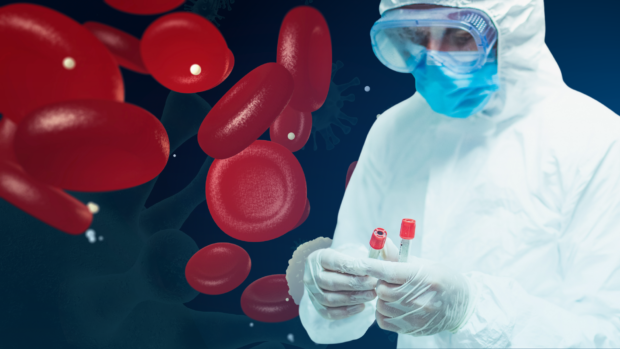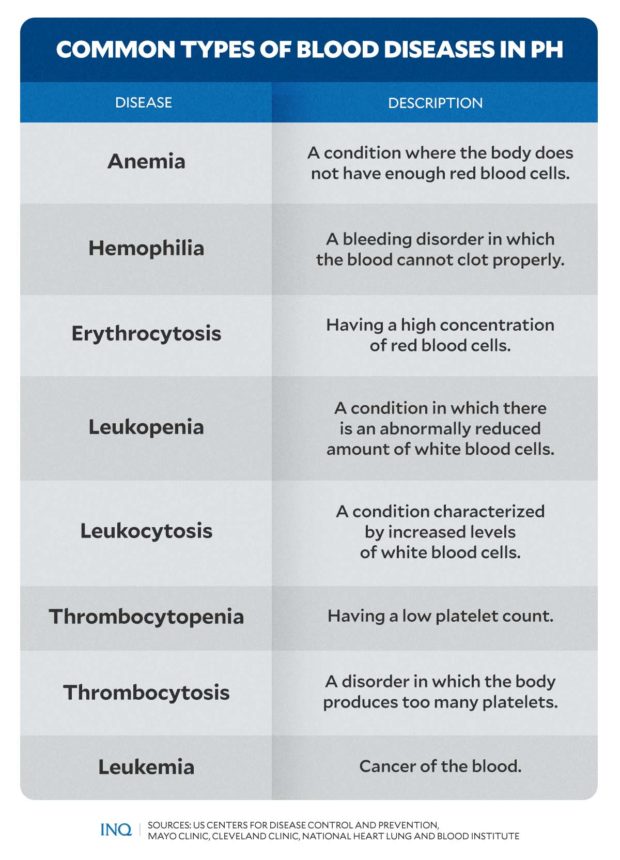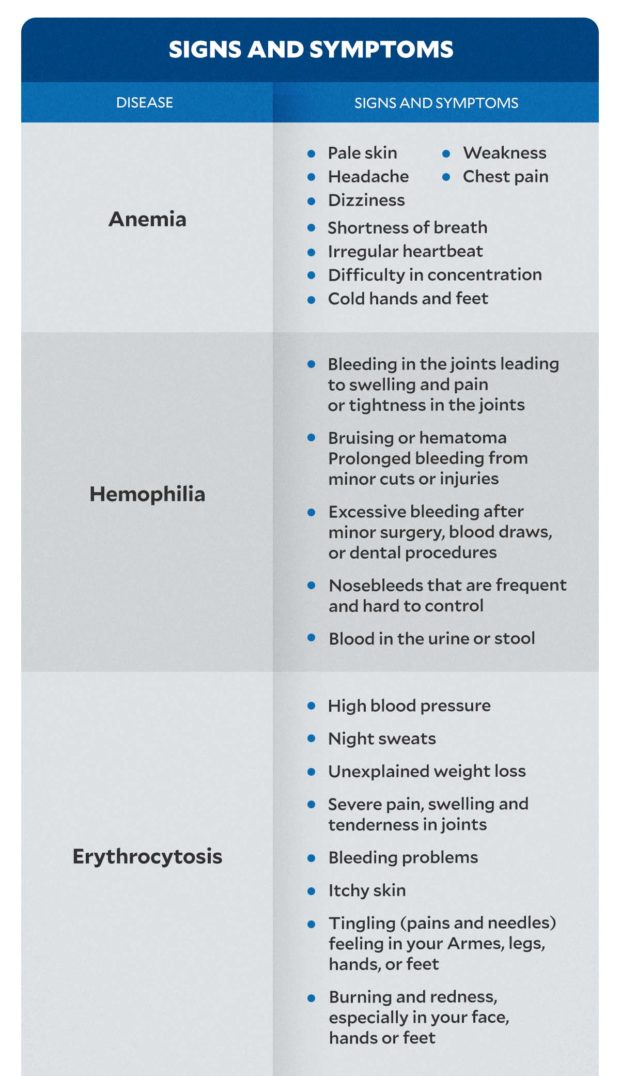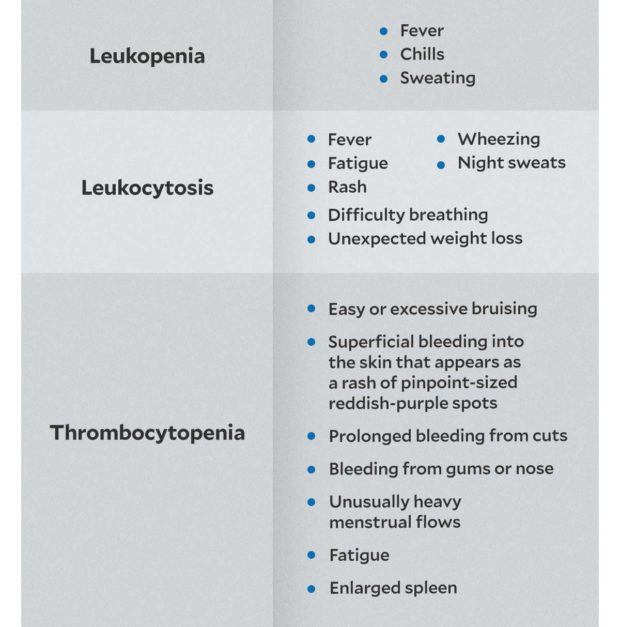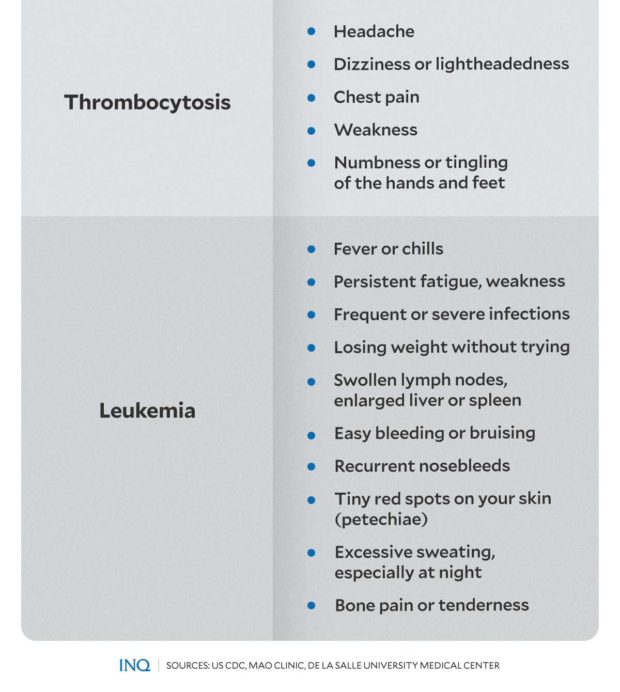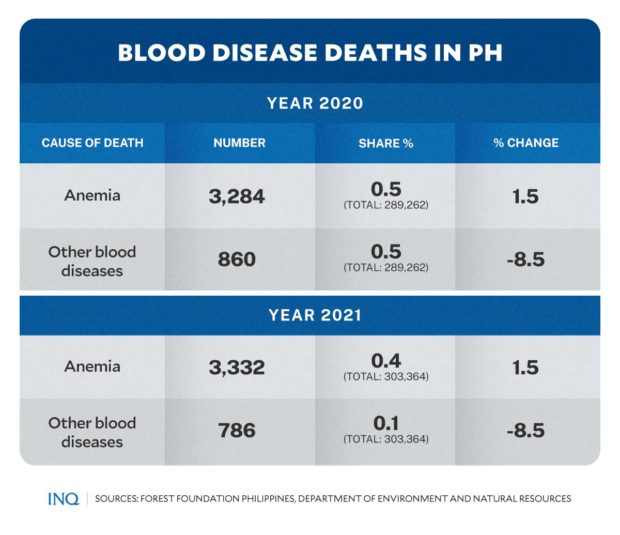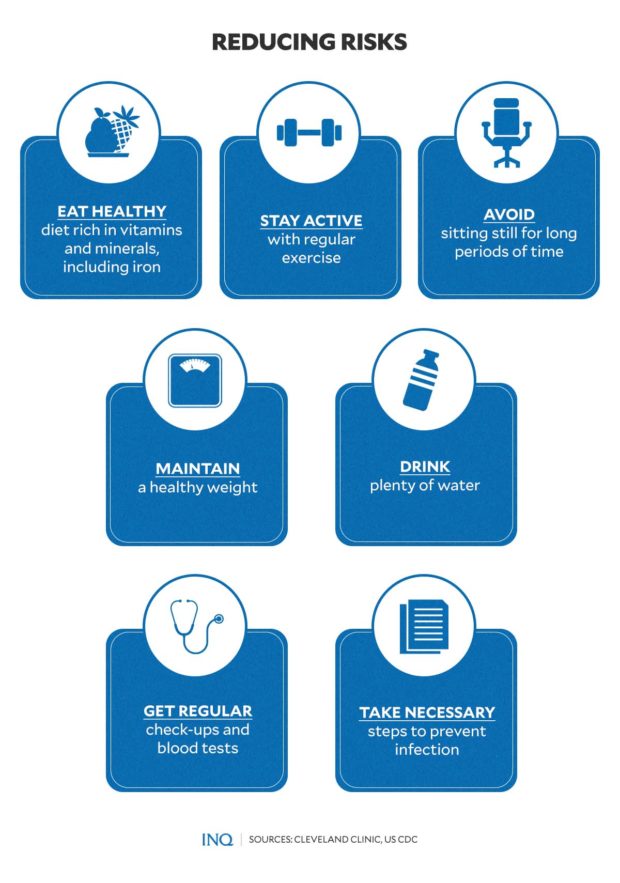Blood diseases’ toll on thousands of Filipino lives
MANILA, Philippines—Blood diseases remain one of the leading causes of death in the Philippines. To raise awareness of different blood-related disorders affecting Filipinos, the country observes Blood Diseases Month every September.
In 2009, then President Gloria Macapagal Arroyo declared September as Blood Diseases Month through Proclamation No. 1833 and designated the Department of Health (DOH) as the lead agency in activities to raise awareness and understanding of blood-related diseases.
“[T]he combined impact of three major blood-related diseases of leukemia, anemia and bleeding disorders is immense, representing a significant portion of the total deaths due to cancer,” the proclamation stated.
“[B]lood diseases related to nutrition and environmental conditions continue to increase in prevalence and pose serious effects to the Filipino people,” it added.
“[T]he measures and strategies in the prevention, treatment and rehabilitation of blood diseases should be extensively and aggressively pursued to reduce the incidence and deaths related to blood diseases.”
In observance of Blood Diseases Month, in this article, INQUIRER.net will explain more details about the most common blood-related diseases in the country, including ways to reduce the risk of complications, and legislative efforts aimed at supporting patients.
Common blood-related diseases
According to the Philippine Council for Health Research and Development (PCHRD)—one of the three sectoral councils of the Department of Science and Technology (DOST)—and the National Nutrition Council (NNC), there are three common blood diseases in the country.
These are anemia, hemophilia, and leukemia.
Anemia, as defined by NNC, is the most common blood disorder and a condition in which the body lacks enough healthy red blood cells that carry oxygen throughout the body—also called hemoglobin.
Having anemia or low hemoglobin, the US Centers for Disease Control and Prevention (CDC) said, can make a person feel tired and weak.
There are different types of anemia. Some of the most common are iron-deficiency anemia, vitamin-deficiency anemia, anemia during pregnancy, aplastic anemia, hemolytic anemia, sickle cell anemia, and anemia caused by other diseases.
Another common blood disorder is hemophilia, a genetic disorder that affects the blood’s ability to clot due to low levels of blood-clotting proteins. According to US CDC, hemophilia is a bleeding disorder in which the blood cannot clot properly.
While it is a rare genetic disorder, the US CDC noted that it could also manifest itself later in life.
Hemophilia can cause spontaneous and prolonged bleeding following an injury or surgery.
There are two types of hemophilia. First is Hemophilia A or Classic Hemophilia, which according to the CDC, is caused by a lack of clotting factor eight. Hemophilia B, or the Christmas Disease, is caused by a lack of clotting factor nine.
READ: EXPLAINER: Five things you need to know about hemophilia
Leukemia, on the other hand, is a type of cancer that affects the blood and bone marrow.
“Cancer happens when the bone marrow produces abnormal white blood cells,” the NNC said.
“These abnormal white blood cells are not able to fight infection and impair the ability of the bone marrow to produce red blood cells and platelets,” the American Society of Hematology explained.
The two different types of leukemia are acute leukemia which grows rapidly and chronic leukemia which tends to grow slowly.
“The causes of leukemia are still unknown. However, there are some factors that [increase] the risk of developing cancer such as exposure to radiation and chemicals like benzene, cigarette smoking, hair dyes, family history of the same case, and genetic disorders such as down syndrome,” said PCHRD.
The De La Salle University Medical Center (DLSUMC), on its website, said aside from anemia, hemophilia, and leukemia, the other common blood disorders include:
- Erythrocytosis: Having a high concentration of red blood cells.
- Leukopenia: A condition in which there is an abnormally reduced amount of white blood cells.
- Leukocytosis: A condition characterized by increased levels of white blood cells.
- Thrombocytopenia: Having a low platelet count.
- Thrombocytosis: A disorder in which the body produces too many platelets.
Cases, deaths
According to data from World Health Organization (WHO), the prevalence of anemia among children aged 6 months old to 5 years old in the Philippines has been decreasing during the past years.
In 2015, the average prevalence of anemia in that age group was around 15.3 percent. It went down to 14.7 percent in 2016 and 14.2 percent in 2017.
In 2018, the numbers further dropped to 13.8 percent and in 2019, the prevalence was at 13.5 percent.
The same goes for the prevalence of anemia among pregnant women aged 15 to 49 years old.
From 29.9 percent in 2015, the prevalence went down to 25.5 percent in 2019.
The prevalence rate of anemia in women of reproductive age in the country, between 15 to 49 years old, was around 12.3 percent in 2019.
Separate data from a study in 2019 said that the prevalence of anemia in the Philippines was highest among infants aged 6 to 11 months (40.1 percent), pregnant women (24.6%), elderly males (23.0%), elderly females (19.1%), and lactating women (16.7%).
The World Hemophilia Federation’s data showed that 1,566 Filipinos have hemophilia. At least 46 have Willebrand disease – the most common bleeding disorder caused by missing or defective von Willebrand factor (vWF).
However, it was earlier estimated that there could be some 10,000 Filipinos afflicted with hemophilia and around one million others with von Willebrand Disease and other clotting factor deficiency disorders.
In the 2015 Philippine Cancer Facts & Estimates report, The Philippine Cancer Society has estimated that at least 4.5 per 100,000 Filipinos may develop leukemia.
It also said that at least 4,270 new cases were diagnosed in 2015, with 3,386 deaths caused by leukemia.
Data by the Philippine Statistics Authority (PSA) showed that the number of deaths caused by anemia increased by 1.5 percent from 3,284 in 2020 to 3,334 in 2021.
Last year there were 786 deaths caused by remainder of diseases of the blood and blood-forming organs and certain disorders involving the immune mechanism. The numbers were lower by 8.5 percent compared to 2020’s with 860 deaths.
READ: COVID clogs avenues for cure of blood disorder in PH
Reduce risk
Some blood disorders cannot be prevented. However, according to US-based Cleveland Clinic, you can still decrease the risk of developing complications by taking good care of yourself. This means:
- Eating a healthy diet rich in vitamins and minerals, including iron.
- Staying active with regular exercise.
- Avoiding sitting for long periods of time.
- Maintaining a healthy weight.
- Drinking plenty of water.
- Getting regular check-ups and blood tests.
- Taking necessary steps to prevent infection. These include getting seasonal flu vaccine shot.
Bills passed
The cost of treatment for blood diseases such as hemophilia is very high.
According to Ric Felipe, president of the Hemophilia Association of the Philippines for Love and Service (Haplos), the national organization of Filipinos with hemophilia, “[a] mild bleed in the joints can cost P30,000 to P50,000 per treatment. Severe bleeds like those in internal organs such as the gastrointestinal tract or the brain can cost hundreds of thousands, if not millions.”
READ: Many Filipinos with hemophilia can’t get treatment
Although non-profit organizations, like Hemophilia Advocates-Philippines (HAP), are able to provide hemophiliac patients free medicines in the past with donations they receive, Andrea Trinidad—president of HAP and former reporter for the Philippine Daily Inquirer—said the group was still pushing for government assistance.
“The donations we get are not assistance from the government. Obviously, it’s not for the long term because we do not know until when the donations will come in. We are really lucky because we currently have donors, but that is not sustainable,” she said in a previous interview with INQUIRER.net.
READ: Six years later, Filipinos with hemophilia still struggle in getting treatment
Trinidad said her group was still lobbying for the enactment of three separate bills that were passed in the Senate and House of Representatives way back in 2017 and 2019.
These were Senate Bill 1335 authored by Sen. Joel Villanueva and co-authored by Sen. Nancy Binay, Senate Bill 1389 authored by Sen. JV Ejercito, and House Bill 4237 authored by Rep. Bernadette Herrera-Dy.
The “Bleeding Disorder Standards of Care Act of 2017” filed by Villanueva and Binay in February 2017, emphasized the need to establish hemophilia treatment facilities in key cities and regions nationwide in designated hospitals with cancer and hematology departments.
“The cost of treatment is very high, and therefore, inaccessible to majority of Filipino patients. Many of them suffer with chronic pain and deformities in the joints because of lack of access to proper treatment. Availability of factor concentrates in the country is also inconsistent,” the bill read.
“Other countries like India and Malaysia give free treatment to their citizens who have bleeding disorders. This bill seeks to provide medical and financial support to patients affected with this condition.”
The bill further stated that every hemophilia treatment facilities should provide the following to patients suffering from bleeding disorders such as hemophilia:
- “Care by qualified hematologists and medical doctors and shall also provide free of charge the necessary blood clotting products and ancillary infusion equipment necessary for the infusion of such blood clotting products;”
- “A room exclusively for hemophilia patients”
- “A clinical coagulation laboratory for the screening, diagnosis, provisional diagnosis, and treatment of bleeding disorders or suspected bleeding disorders and such services shall be provided free of charge to all indigent patients.”
Ejercito’s bill in March 2017 and Herrera-Dy’s bill filed in 2019, which were also both entitled “Bleeding Disorders Standard of Care Bill,” reiterated the call for hemophilia treatment facilities in the country.
A similar bill was also passed in 2013. Senate Bill No. 2047 by then-senator Teofisto Guingona III “seeks to establish the Philippine Blood Disease and Transfusion Center (Blood Center), which is envisioned to offer comprehensive care for patients with blood disorders, and to provide transfusion services to the Filipino people.”











